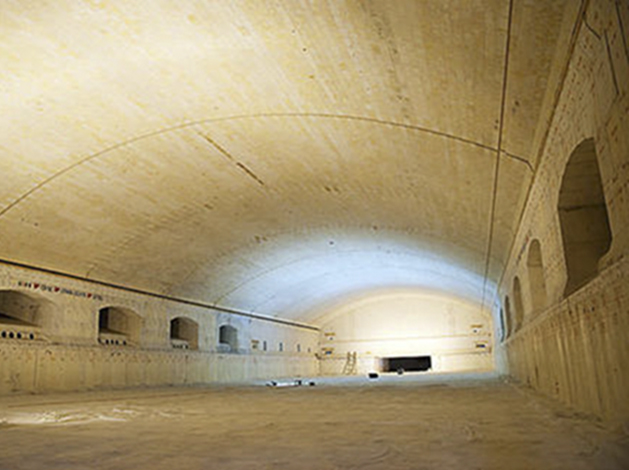
Product List
Success Case
Contact Us
- 0086 371 63838939
- 0086 371 63835539
- sales@sunriserefr.com
- tkfanyi
- No.36 Fengchan Road, Zhengzhou City

News
How to Expand Service Life of Float Glass Furnaces
- More related products
- Fused Cast AZS
- Fused Cast Alumina Block
- Fused Cast High Zirconia Block
- Fused Cast Skid Rail Block
The main measurements to expand the service life of float glass furnaces include refractory, furnace steel structure, expansion joints, L-shape suspended wall, pressure, air cooling and water cooling, masonry, pre-heating and maintenance.

1) Refractory
The quality of refractory materials in different parts should be guaranteed. Refractory materials in different parts should be appropriate. Basic refractories and acid refractories should be separated with reliable materials. Refractories in direct contact with molten glass should have great corrosion resistance to molten glass. The upper and middle parts of the checker work should have good resistance to high temperature and alkali dust.
2) Furnace steel structure
For example, a 500t/d float glass furnace is composed of nearly 20 kinds of refractories in more than three hundred sizes and hundreds of thousands bricks (50 0,000-700,000) weighing thousands of tons (5000 to 8000 tons). Furnace steel structure is used to support and constraint the brick structure of the furnaces. It must ensure that all the parts can keep no more than the allowed deformation or not make bricks crushed during masonry and use. So it cannot be too weak or too strong.
3) Expansion joints
The furnace will run at high temperature in a long term, so expansion joints are important to the service life of furnaces. Since refractory materials have thermal expansion properties, expansion joints should be reserved in some parts to ensure that refractory bricks not be crushed and the wall not deformed.
4) L-shape suspended wall
It is used in glass furnace front wall, replacing the traditional arch structure front wall. The arch structure has a small span ratio, so it is subjected to a large stress. And it is made of silica brick which is an acid refractory, so it has bad resistance to the alkali vapor. Compared to the arch structure, the L-shape suspended wall can be made wider, close or equal to width of the melting tank. The structure is more reliable and has a longer service life.
It is used in glass furnace front wall, replacing the traditional arch structure front wall. The arch structure has a small span ratio, so it is subjected to a large stress. And it is made of silica brick which is an acid refractory, so it has bad resistance to the alkali vapor. Compared to the arch structure, the L-shape suspended wall can be made wider, close or equal to width of the melting tank. The structure is more reliable and has a longer service life.
5) Pressure
In general, the pressure in the melting zone is 5-7Pa, which means the pressure inside the furnace is 5-7Pa higher than the pressure outside the furnace. This slight positive pressure not only prevents the cold air inside from entering the furnace, but also prevents the flame from getting out of the furnace.
6) Air cooling and water cooling
Parts requiring air cooling include the sidewall of the melting zone, the sidewall of the throat, the foot beam of the melting zone, iron bar of the doghouse and L-shape suspended wall. Parts requiring water cooling include the outer sidewall corner at the throat inlet and the intersection of the liquid leveling pool and the melting zone.
7) Masonry
The masonry has great influence on the service life of the furnaces. Select a qualified professional construction company.
8) Pre-heating
Preheating is crucial to the service life of the furnaces. It will irreversibly influence the service life and performance of the furnaces. Improper pre-heating may cause deformation, cracks, sinking and crushing, which may affect the service life of the furnaces. The temperature rising curve must be reasonable.
9) Reasonable operation
The temperature should be reasonable. The pressure should be reasonable and stable. The level fluctuation of the glass liquid should be small. All the facilities should be in good condition and operated properly without doing damage to the furnace.
10) Maintenance
According to the operating procedure of the glass furnace, inspect the furnace every day. If there is any problem, deal with it timely.
- Read more
- Selection for the Bottom Paving Brick of Float Glass Furnaces
- Selection of Sealing Materials for the Bottom of Float Glass Furnaces
- The Application Of Fused Cast AZS Block In The Sidewall Of Glass Furnaces
- Refractory Selection for Oxy-Fuel Glass Furnaces
- How To Prolong The Service Life Of Glass Furnace
Leave Message
For more information on any of our products please get in touch using the form below. One of our sales team will respond to your enquiry as soon as possible.

Copyright © 2014 Zhengzhou Sunrise Refractory Co., Ltd. 豫ICP备13002126号












